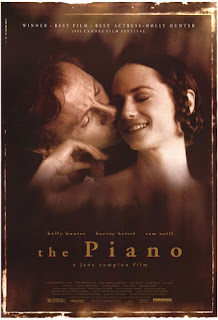September 28th: A PASSAGE TO INDIA (David Lean, 1984)
In 1920s British-controlled India, an incident between an Englishwoman and a local Indian doctor sparks dormant racial and class controversy.
Before becoming one of the most respected names in British cinema, David Lean began his career as a film editor, finally moving behind the camera to direct in his collaborations with playwright and actor Noël Coward in the early 1940s. After a series of successful smaller films including the Charles Dickens adaptations of Great Expectations and Oliver Twist, he went epic with The Bridge On The River Kwai (a winner of 7 Oscars including Best Direction for Lean) and never looked back, following with additional large productions Lawrence of Arabia and Doctor Zhivago.
The negative critical reception of his 1970 film Ryan's Daughter sent Lean into an extended, depressed hibernation. He had tried for a decade to secure the rights to E.M. Forster's classic 1924 novel A Passage To India, but the author had resisted any attempts to film his works, only allowing a stage adaptation by Indian writer Santha Rama Rau. Legendary Indian filmmaker Satyajit Ray was also turned away, as were the Merchant Ivory team (who would later film Forster's Howard's End). Lean, who was at the time married to an Indian woman and had also failed to mount a biopic of Mahatma Gandhi, would eventually get his chance to explore the country on film after Forster's death.
The producers of A Passage To India were under certain obligations to Forster's estate: the script had to be written by Rau using her play as a starting point. After Lean was approved as director, he attempted to work closely with Rau but felt her first draft of the screenplay failed to meet the needs and scope of a large film production. Lean took over writing duties himself, spending six months living in New Delhi while doing so, and his script was given the go-ahead by the producers.
Used to working with bigger name actors, Lean found himself with two less-proven leads, Australian actress Judy Davis (Barton Fink) and Indian actor Victor Banjeree (recommended by Satyajit Ray). British theatre veteran Peggy Ashcroft had recently filmed the India-set miniseries Jewel In The Crown and was familiar with the setting. The rest of the cast includes Indian actors Saeed Jaffrey (The Man Who Would Be King) and Roshan Seth (Gandhi), Pakistani actor and Royal Shakespeare Company alum Art Malik, and British actor James Fox (Performance, Patriot Games). In a controversial move, Lean cast longtime collaborator Alec Guinness as an Indian professor over the protests of various production team members.
The film was primarily shot on location in India, the production renting out a former Maharaja palace for interiors and exteriors, with production designer John Box (Lawrence of Arabia) constructing an extensive marketplace set on the grounds. Other location shoots occurred in Ramanagaram, Udhagamandalam, and Kashmir near the Himalayas. For the set pieces inside the caves, the crew wound up blasting and carving out new spaces for the production per Lean's wishes. Behind the camera was cinematographer Ernest Day.
For the first time in over 40 years, Lean edited his own film, with the desire to receive screen credit for this role as part of his big comeback. The film was a critical success, receiving Best Film and Best Director honors from the New York Film Critics and National Board of Review. It was nominated for 11 Oscars including Best Picture, Davis and Ashcroft's performances, and Lean's writing, directing, and editing. Competing against the juggernaut of Milos Forman's Amadeus, it only managed wins for Ashcroft and Maurice Jarre's musical score.
Running time is approx. 2 hrs, 40 min.










Comments
Post a Comment